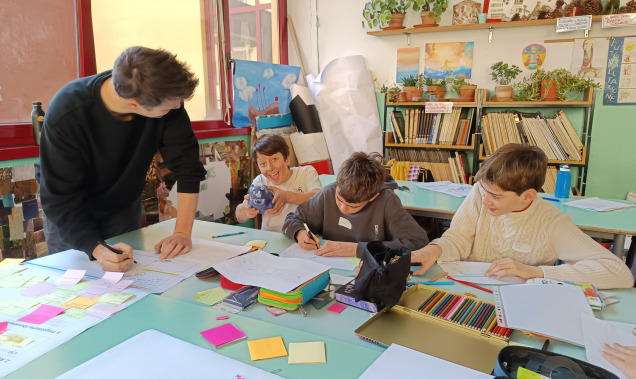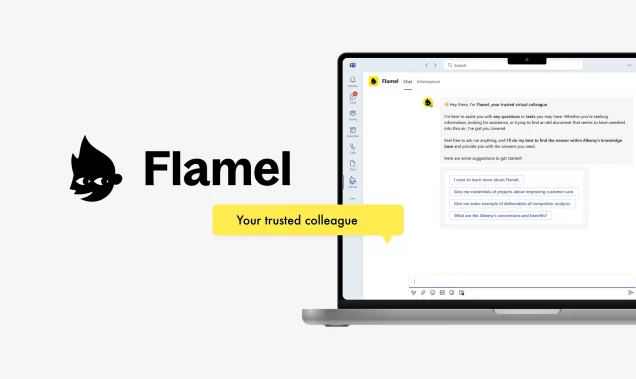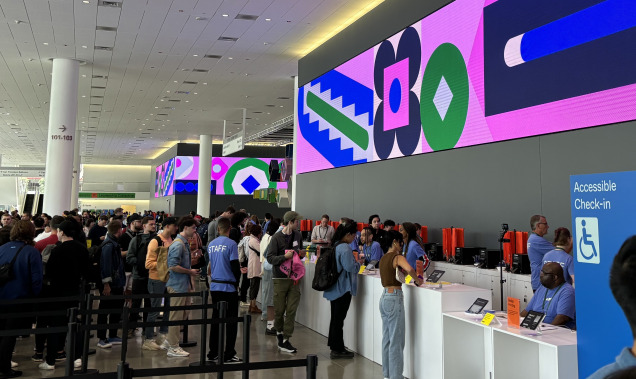Teaching design from remote
In the past months, we’ve taken not just our work, but also our teaching and our other academic contributions online. Lighting Design Director Carlo D’Alesio writes about the challenges and the possibilities of teaching design from remote.
Teaching design in leading universities both in Milan and globally has always been a part of our profession. In the wake of the COVID-19 pandemic, as we’ve taken our teaching engagements online, distant learning has arisen as a topical cross-company discussion.
For the first time ever, we rounded up to share our experiences and considerations on the ongoing paradigm shift. We estimated that during March and April 2020, our team delivered 400+ teaching hours combined, impacting 600+ students spread across four continents.
The subjects we’re currently teaching cover a wide spectrum of specialties:
- Industrial and product design
- Interaction design
- Lighting design
- Service design
- Design management
- Visual culture of design
The universities and higher education entities we’re contributing to are:
- Politecnico di Milano, Facoltà del Design
- Politecnico di Milano, Poli.Design
- SPD (Scuola Politecnica di Design)
- Domus Academy
- NABA (Nuova Accademia delle Belle Arti)
- IED Milano
Our students are culturally (and physically) diverse, with our virtual classrooms reaching from Rome to New York through Singapore and China.
Service designer, TA in the Visual Culture of Design at Politecnico di Milano Gea Sasso says she “had to rethink the entire course schedule from scratch. The activities that were imagined as ‘workshops’ required the biggest re-edit effort. Time perception is different, and teaching needs to be wisely planned for digital. Informal chats are completely cut off – which is negative.”
Working together with students on paper, like plans or sketches, is impossible without physical means. Printing is important to ‘finalize’ homework, such as technical drawings. Once this is removed, it is harder to memorize mistakes and learn from them.
The problem of this abrupt, forced total transition is not about existing or forthcoming digital technologies. Improvements in the digital realm can only be incremental at this point in time. Innovations on physical assets and processes will be the ones bringing a true disruption in the learning industry. The learning process is not only about feeding information. Human physical interactions are a long way away from being replaced.
The search for the best equation
For the first time ever, I have felt the power of non-verbal communication. You just can’t digitalize a four-hands sketch, a glimpse, the whole behavioral spectrum of human interaction. Moreover, the trial-error sedimentation finds no equal gripping ground on digitalized assets.
If we abstract ourselves from the distant learning topic, I‘ve got a hunch that all of this is a mirror of the near future of remote working to come. If we see humans as a constant learning entity, during this pandemic we might have learned that we’ll retake the physical world – the one to which we truly belong – with an evolved digital mindset and conscience. Distant learning and working will no longer be perceived by society at large as a secondary viable option but as a strong component of our overall, personal evolution.
The challenge will be in defining and evaluating the best equations in physical and digital environments. Case by case, person by person, resulting in a more complex and scattered scenario for the future.
Physical and digital worlds flake off
Covid-19 lockdowns have deeply impacted the education system, with teaching and learning having swiftly moved online. The aforementioned institutions were already well-equipped for distant learning and hybrid educational programs and were set with cloud repositories, privacy guidelines, and remote meeting software. In my experience, the shift to digital occurred quite smoothly. Mind me though; it was an abrupt shift to an all-digital setup, not a true, new beginning.
In most cases, the revision of calendars was minor, thanks to an already up-to-date technological and personnel readiness. Graduation sessions, as well as next-year open days, are currently on schedule.
But on the other hand, many students decided to leave Milan and return home. Suddenly, the teaching schedule set in GMT+2 would have to be followed by students in India, Colombia, South Africa, China alike. On my screen, there were dusks, dawns, and pitch-black nights.
One positive outcome of the situation is that technology adoption faces fewer barriers than before. Our Interaction Designer Megha Damani sees the current situation as “great testing time for distance learning, and to reach the non-tech savvy teachers and students. I’m sure this will stay and it will be the new way everyone starts expanding their business or classes,” Damani says.
Is distant learning really scalable?
In the context of more theoretical, frontal lessons, distant learning could keep up with physical lessons – if not replace them as a more efficient method.
In my case personally, my course exploring Lighting Theory, and our advisor Massimo Pettiti’s courses in Design Management and Digital Marketing at NABA, could benefit from a digital-only approach.
Giacomo Ferrari, Interaction Designer, Visiting Professor and Project Advisor for the Master in Interaction Design at Domus Academy says, “as an Interaction Designer, I try to create lessons that are immersive, with videos and sounds, taking the advantage of screens and speakers. When I do project revisions, I try to challenge my students to use interactions that don’t involve the human touch, such as Voice User Interfaces.”
Creative, collaborative problem-solving lectures and workshops are not as easily translated to digital formats. On collaborative classes, Massimo Pettiti says, “I often bring industry’s representatives and managers to let the students know how the world is ‘out there’, to give them experiences and business cases. Oddly enough, this is much less efficient in a remote session, even with my closest connections.”





